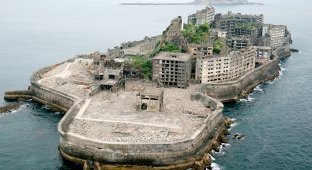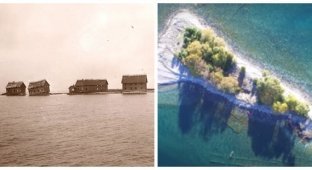Hashima Island: abandoned Klondike (8 photos)
In 1810, Japanese fishermen were sailing near an island in the East China Sea and decided to stop off its shore. The island was only six hectares and on it, besides plants, there were only birds that settled on trees and rocks. 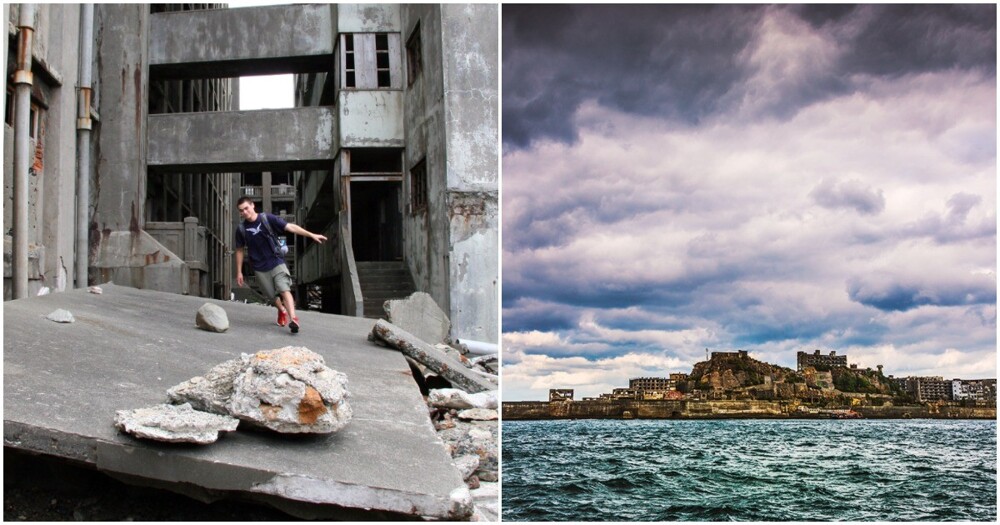
Fishermen landed on Hashima and were surprised to find stones that resembled coal on the uninhabited island. In those days, it was considered the same precious thing as diamonds. The joyful men took a few stones with them and went home. The stones turned out to be real coal and burned well, so fishermen began to regularly moor at the island to replenish their supplies. 
More than fifty years passed before influential people learned about Hasim, and by that time the fishermen there had dug modest mines on their own. Coal, by the way, did not dry out; its deposits went deep in layers.
The Fukahori company came to Hashima and was amazed at the volume of coal. They immediately laid a mine (36 meters deep) and began to mine coal on an industrial scale. But pretty soon Mitsubishi, a richer and more influential organization, acquired the entire island, along with the rights to coal mining. 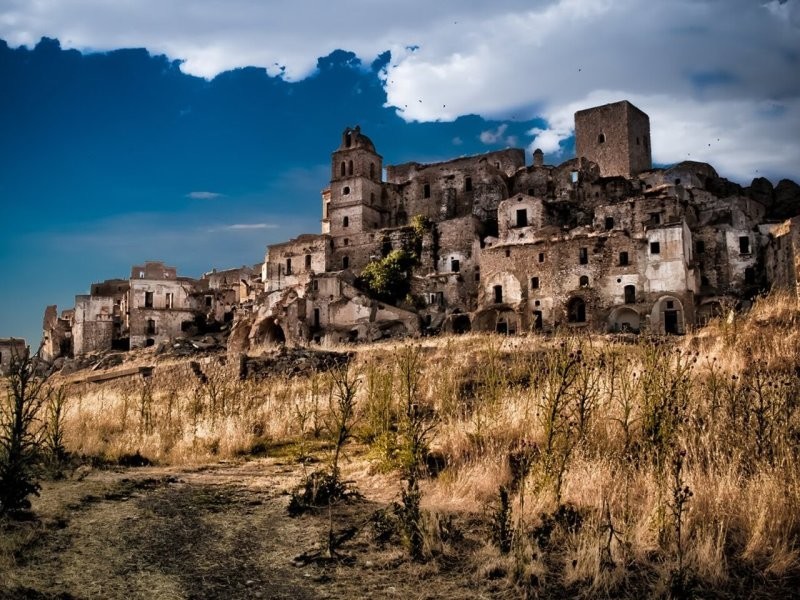
They laid two more mines: one was 200 meters deep, and the other was 600 meters deep. An active campaign to recruit workers began.
At the end of the 19th century, a global bustle began on the once secluded island: houses, a hospital, schools were built for miners and their relatives, shops were opened, and a constant supply of food and water began to Hashima.
The first high-rise building on the island was built in 196. And it became the first reinforced concrete residential structure, after which they began to gradually demolish wooden cabins that had been put up in a hurry, and build other high-rise buildings equipped with special protection from wind and storms. 
1950
There was little space on the island and the territory was used wisely: the streets between the buildings were narrow, but the designers even managed to build public gardens and courtyards next to the houses so that residents could relax after work.
The island then received a second name - Gunkanjima (translation - “Cruiser Island”) 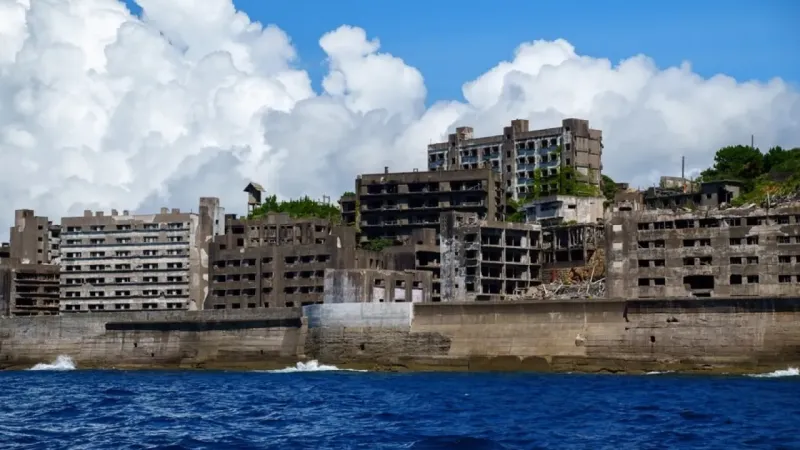
But, despite the apparent prosperity, working conditions in the mines were, of course, far from ideal. So that the workers would not be indignant, all sorts of gambling houses, a cinema, a swimming pool, bars with high-quality alcohol, a bathhouse, and even establishments where they could spend time with beautiful girls were built for them. The introduction of social packages and health insurance has already been discussed.
But then the second Sino-Japanese War broke out. And the island, instead of a mining town, turned into a fort: fortifications were built on it, and instead of contract workers, prisoners of war began to be sent to the mines. An airstrike destroyed one of the mines, where many people were located at that moment. They all died. 
The war ended and they began to try to rebuild the island. At a certain time, Hashima became a very tempting target for migrants, and by 1960 it was inhabited by a record number of people - 5,260.
But it did not remain the most populous place on earth for long. Coal began to run out and mining it became simply unprofitable. Plus, the whole world was already switching to oil, which was becoming cheaper every year. There were fewer jobs and people began to leave. 
The end of Hashima's story came in 1974.
Coal mines were blown up and coal mining was completely stopped. All schools and shops were closed, and apartments in high-rise buildings were empty. A year later, the very last inhabitants of the island left it forever.
Today's Hashima has become an abandoned island, from which hundreds of empty eye sockets look out at houses. It was closed to all visitors for a long time, and only in 2009 people began to be brought there to admire the gloomy spectacle. Tourists are led along a strict route - this is about a third of the island. No one is allowed inside the buildings, which becomes the subject of a lot of speculation and fantasies. But the authorities say that this is due to the safety of people, because all the houses and institutions are already dilapidated and could crumble at any moment. 
Stalkers, of course, are not stopped by prohibitions and at night they periodically sail to Hashima to get deeper into the island.
They are especially attracted to the object called "Stairway to Hell." There is a steep climb to the already destroyed temple, followed by a steep descent into the endless labyrinth of streets of the former mining town, where sunlight almost never reaches.












